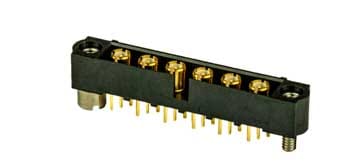(b) the length of a wire which, when connected in parallel with the 2m
wire will give a resistance of 2.0 Ω.
Read our disclaimer.
AD: Take Free online baptism course: Preachi.com 
Resistivity is a measure of the resistance of a given size of a specific material to electrical conduction.
Resistivity may also be referred to as the specific electrical resistance, or volume resistivity, although these terms are less widely used.
Although materials resist the flow of electrical current, some are better at conducting it than others. The resistivity is a figure that enables comparisons of the way in which different materials allow or resist current flow.
To enable resistivity figures to be meaningful, specific units are used for resistivity, and there are formulas for calculating it and relating it to the resistance in Ohms for a given size of material.
Materials that conduct electrical current easily are called conductors and have a low resistivity. Those that do not conduct electricity easily are called insulators and these materials have a high resistivity.
The resistivity of different materials plays a major role in selecting the materials used for electrical wire, within many electronic components including resistors, integrated circuits and many more.
Practical implications of resistivity
The resistivity of materials is important as it enables the right materials to be used in the right places in electrical and electronic components.
Materials used as conductors, for example in electrical and general connecting wire need to be able to have a low level of resistivity. This means that for a given cross sectional area, the resistance of the wire will be low. Selecting the right material depends on knowing its properties, one of which is its resistivity.
As an example, copper is a good conductor as it provides a low level of resistivity, its cost is not too high, and it also provides other physical characteristics that are useful in many electrical and electronic applications. The resistivity of copper is around 1.7 x 10-8 ohm metre (or 17. nΩm), although figures will vary slightly according to the grade of the copper
Materials like copper and even aluminum provide low levels of resistivity and this makes them ideal for use as electrical wires and cables – copper often being the favourite. Silver and gold have much low resistivity values, but as they are considerably more expensive, they are not widely used. However, silver is sometimes used to plate wires where its low resistivity is essential, and gold flashing is used for the mating surfaces of many electronic connectors to ensure the best contacts. Gold is also good for electrical connectors as it does not tarnish or oxidise like other metals.

Multiway PCB connector has gold flashing on the mating contacts to reduce the contact resistance and it also prevent tarnishing
Other materials are required to act as insulators, carrying as little current as possible. The resistivity of an insulator will be many orders of magnitude higher. One example is air and this has a very resistivity figure of over 1.5 x 1014, which can be seen to be very, very much higher than the resistivity of copper.
Electrical resistivity is important in many other electronic components. In resistors for example the resistivity of various materials is key in making resistors have the right resistance.
Resistivity is also key in other electronic components as well. For integrated circuits the resistivity of the materials in the chip is very important. Some areas need to have a very low resistance and able to connect different areas of the IC internally, whereas other materials need to isolate different areas. Again, the resistivity is important to make this happen.
Resistivity is key in many areas of electronic components as well as for many electrical parts as well.
Electrical resistivity is a key parameter for material that are to be used with electrical and electronic systems. Those substances with a high electrical resistivity are termed insulators and can be used for this purpose. This with a low level of electrical resistivity are good conductors and can be used in a host of applications from wire, to electrical connections and much more.
Source- https://www.electronics-notes.com/articles/basic_concepts/resistance/electrical-resistivity.php
Read our disclaimer.
AD: Take Free online baptism course: Preachi.com 